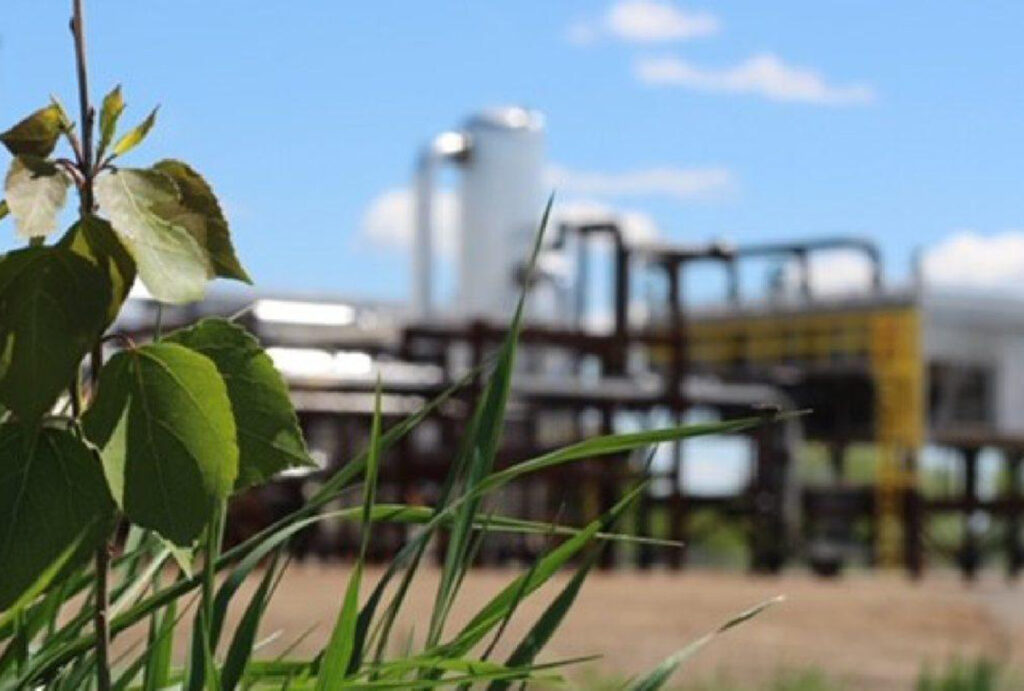We know it’s safe because we know exactly where all the CO2 is’
By Will Gibson
Follow CEC on Linkedin CEC Linkedin
Follow CEC on Facebook CEC Facebook
Follow CEC on Twitter CEC Twitter

The Alberta Carbon Trunk Line is the world’s largest CO2 pipeline. Photo courtesy Canada’s Oil Sands Innovation Alliance
In almost 20 years of researching how to safely capture and store carbon dioxide, Katherine Romanak has learned to distill that hard-earned knowledge into a simple message.
“The industry is very safe and has demonstrated as such,” says Romanak, a senior research scientist at the Bureau of Economic Geology at The University of Texas at Austin.
She has worked on carbon capture and storage (CCS) projects around the world including Quest in Alberta and Weyburn-Midale in Saskatchewan.
“CO2 in the air is way more dangerous for us than CO2 in the ground…The problem is most people are not exposed to [CCS] so they can’t see risk other than in terms of potential disasters and destruction,” Romanak says.
“They view carbon dioxide as pollution and don’t want it in the ground. I tell them, you are drinking carbon dioxide when you drink cola. It’s a natural part of our world. There’s just too much of it in the air and we need to take it out of the active carbon cycle.”
Romanak is bringing that straight talk to the 2023 United Nations Climate Change Conference, commonly known as COP28, in Dubai.
Ahead of the conference, some environmental activists are lobbying to sideline CCS as a solution to meet climate targets. This tactic puzzles Romanak.
“This defies reality and hurts the climate,” she says.
“It will take decades, if not centuries, to wean ourselves off oil and gas and we need to stop emissions now. To do that, you need to expand CCS, not stop it.”
Romanak sees COP28 as a crucial venue in the battle for ideas and investment.
“Capturing and storing CO2 underground is not a new technology. We’ve been doing it for 50 years. But we are now in the phase where we are upscaling the technology,” she says.
CCS projects around the world today have the capacity to store about 50 million tonnes of CO2 per year. To meet climate targets, that needs to grow significantly.
According to the Intergovernmental Panel on Climate Change, the International Energy Agency and others, by 2030 the world needs CCS to store one gigatonne of CO2 per year, rising to 10 gigatonnes by 2050.
The United States and Canada have the largest number of planned CCS projects in development, according to the Global CCS Institute.
Beth (Hardy) Valiaho of the International CCS Knowledge Centre said extensive monitoring in Canada shows the industry hasn’t experienced any major safety incidents.
“We know it’s safe because we know exactly where all the CO2 is,” says Valiaho, the centre’s vice-president of policy, regulatory and stakeholder relations.
But the industry’s track record isn’t always understood, particularly in regions where new CCS projects are proposed. Even in Canada, where CCS has safely operated for more than two decades, new projects require extensive information sharing.
Cold Lake Mayor Craig Copeland, whose community is near a proposed carbon storage site in the proposed Pathways Alliance CCS network in northeastern Alberta, came away impressed after attending open houses put on by the project.
“I didn’t know much about it, but the companies involved in the project made experts and scientists available who were able to explain how it worked and answer all the questions that were put to them,” says Copeland, who has served as mayor for 16 years.
“We are very familiar with oil and gas as most of the major companies operate in the region and so we have a real understanding of the industry’s culture around safety and how that’s evolved. I have no concerns. There’s a lot of smart people working on this. We have the expertise in Alberta and have demonstrated we can capture and store CO2 safely.”
The unaltered reproduction of this content is free of charge with attribution to Canadian Energy Centre Ltd.
Share This:




